Abstract
Capsid, envelope, and nonvirion-associated soluble components of type 1 and type 2 herpes simplex virus (HSV) were obtained from infected monolayer cell cultures and used as complement fixation (CF) antigens. Capsids were prepared by treatment of cells with the nonionic detergent Nonidet-P40, envelope material by treatment of virions with ether and high pH, and soluble components were obtained from culture fluids of untreated cells. Serological studies with experimental anti-herpesvirus sera indicate that these serotypes share cross-reacting envelope, capsid, and soluble antigens with each other and with herpesvirus B but not with varicella virus. In addition, animals immunized with crude HSV preparations contain high levels of CF antibody (1:32 to 1:64) to soluble antigens, whereas sera from humans who have experienced natural infection contain low levels of antibody (≤1:8) to this antigen. Further testing with reference, capsid, and envelope antigens indicates that antibody levels to reference and capsid antigens are about the same in sera from healthy humans, whereas antibody to the envelope is decidedly lower in these sera. Herpes convalescent-phase sera contain higher levels of antibody to reference and envelope antigens than to capsid antigen.
Full text
PDF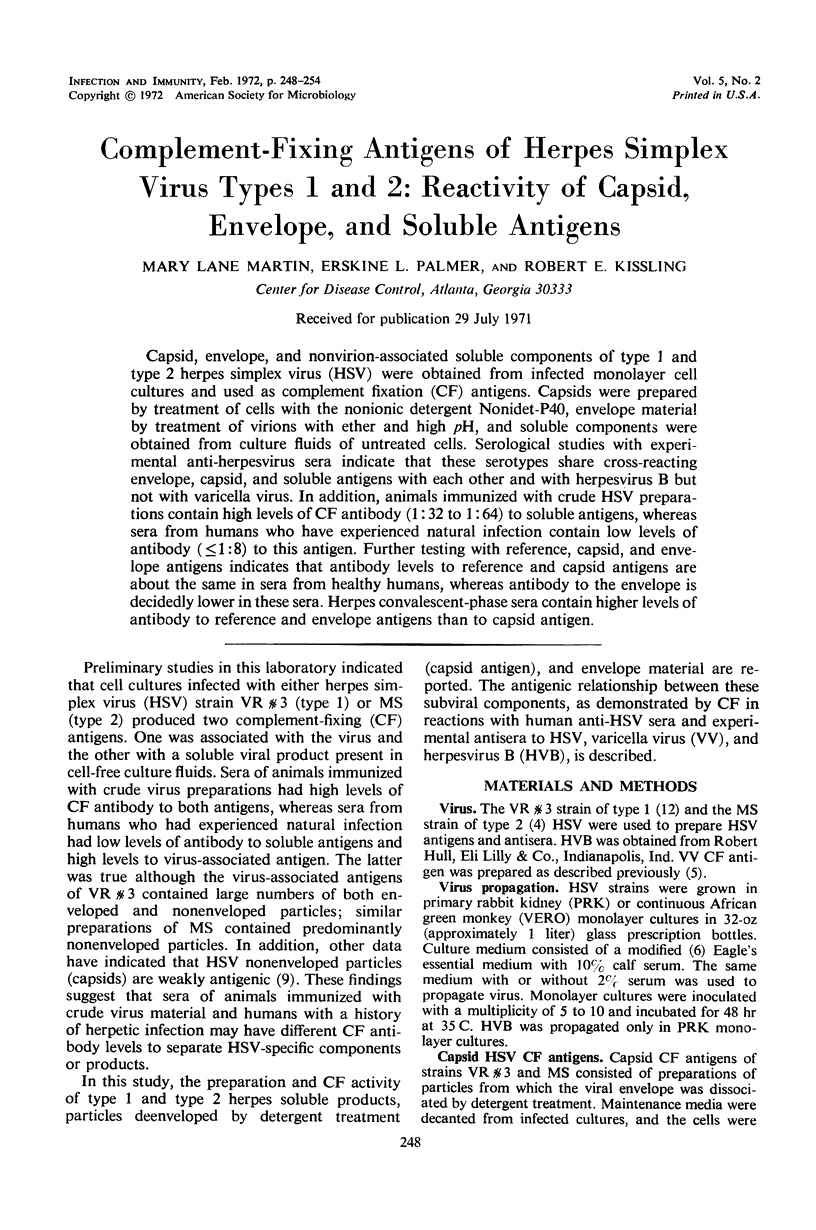
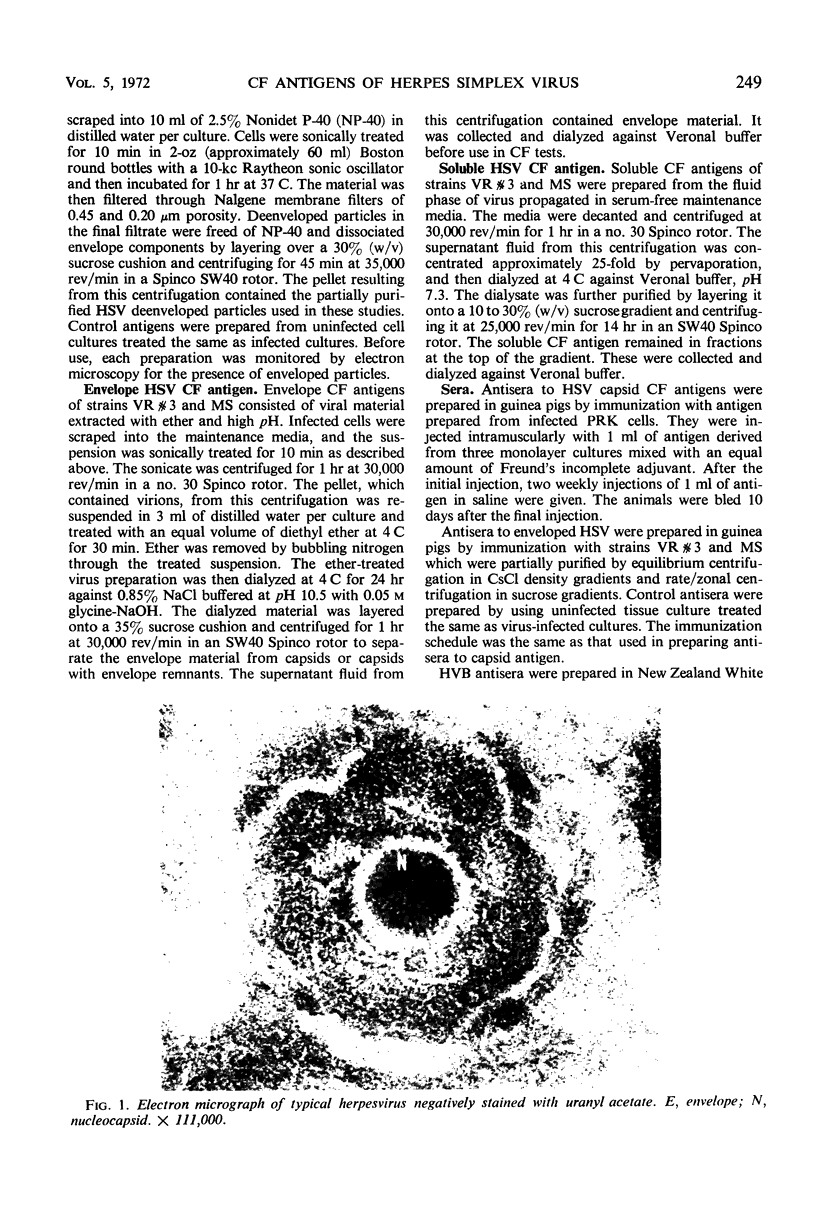
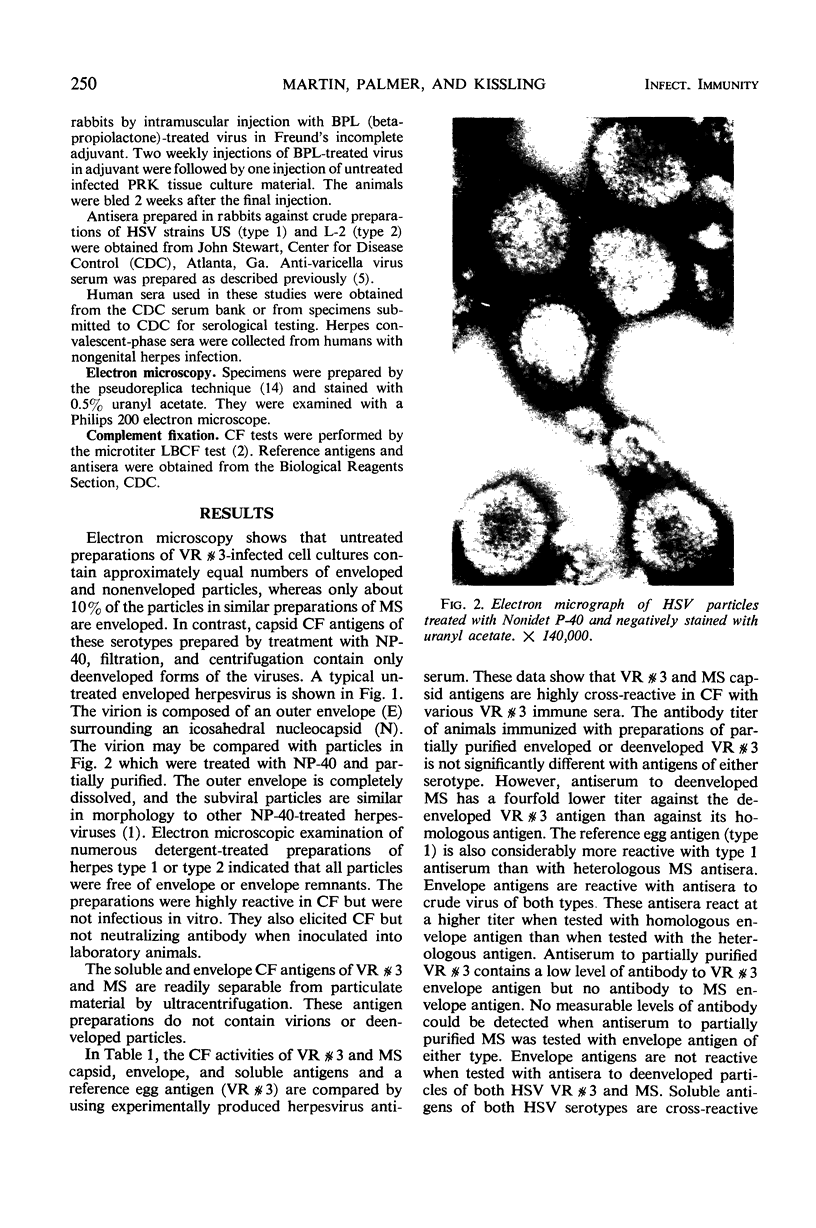
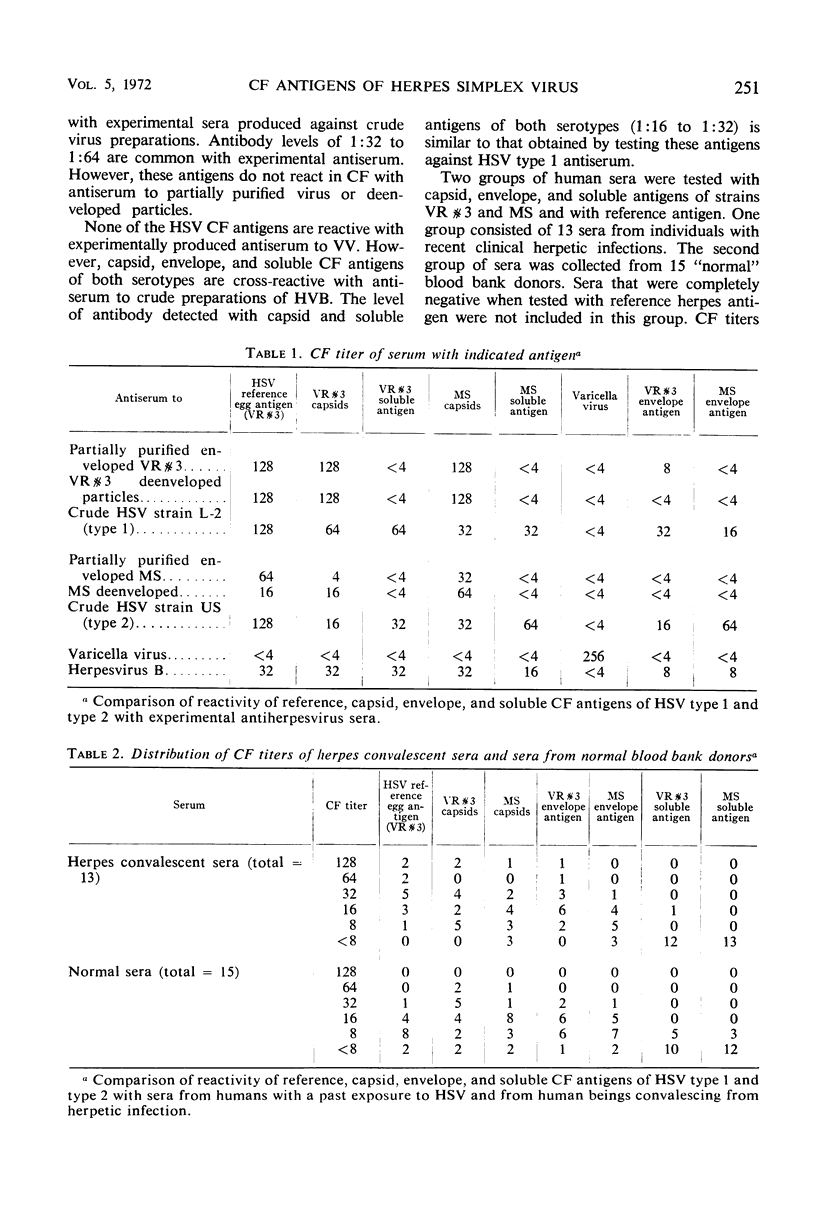

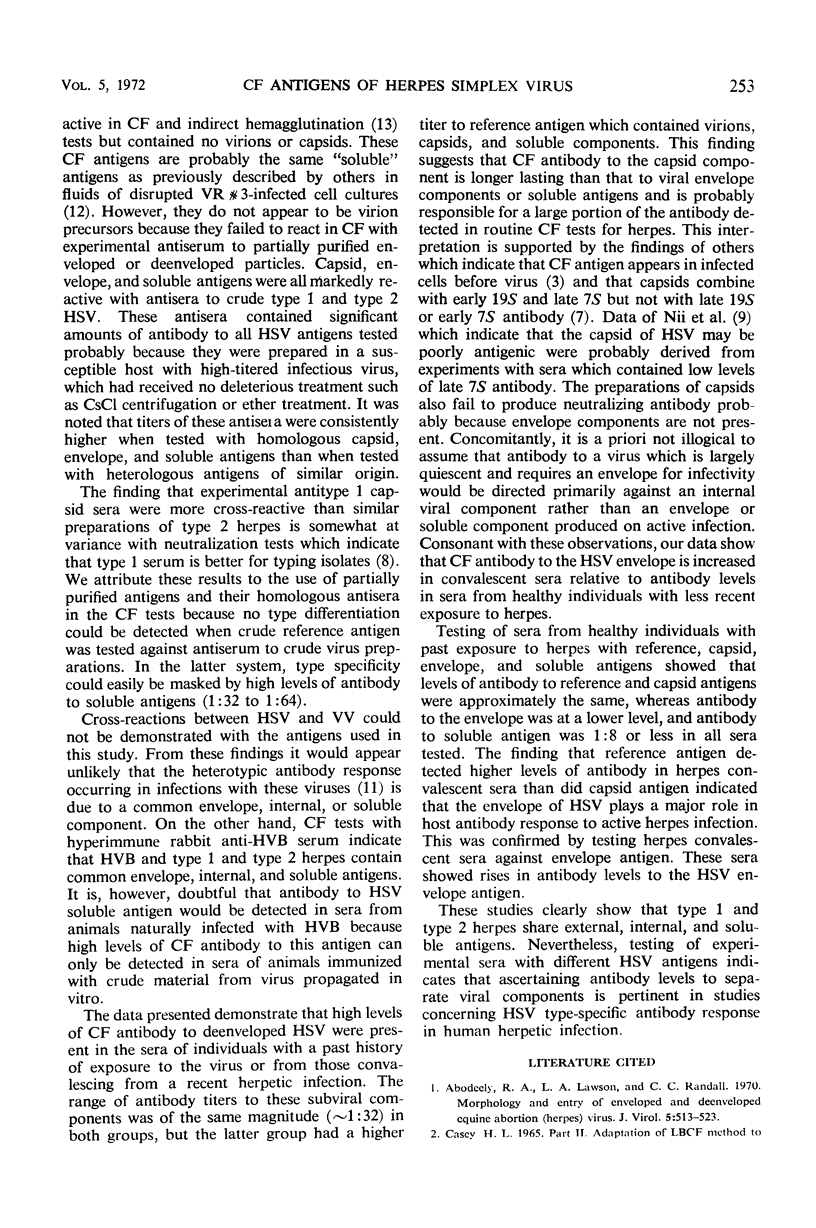
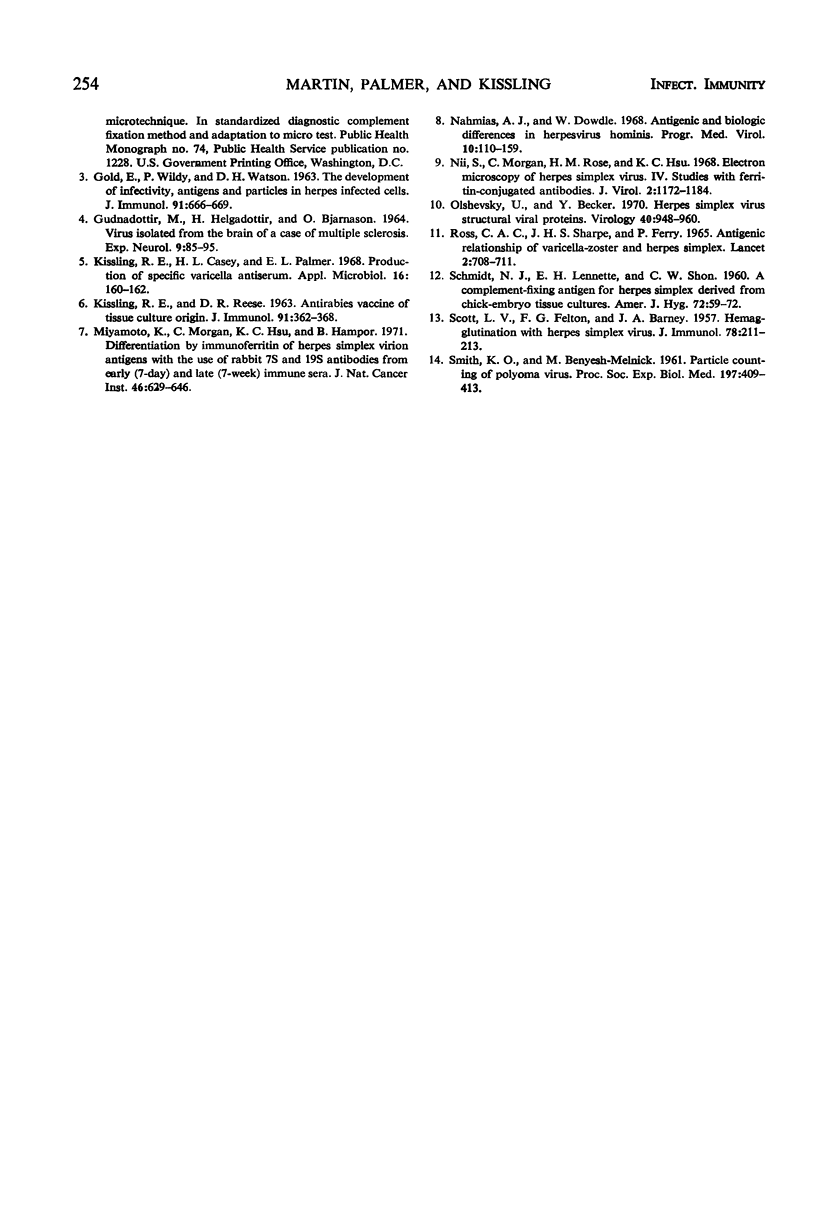
Images in this article
Selected References
These references are in PubMed. This may not be the complete list of references from this article.
- Abodeely R. A., Lawson L. A., Randall C. C. Morphology and entry of enveloped and deenveloped equine abortion (herpes) virus. J Virol. 1970 Apr;5(4):513–523. doi: 10.1128/jvi.5.4.513-523.1970. [DOI] [PMC free article] [PubMed] [Google Scholar]
- GOLD E., WILDY P., WATSON D. H. THE DEVELOPMENT OF INFECTIVITY, ANTIGENS AND PARTICLES IN HERPES INFECTED CELLS. J Immunol. 1963 Nov;91:666–669. [PubMed] [Google Scholar]
- GUDNADOTTIR M., HELGADOTTIR H., BJARNASON O., JONSDOTTIR K. VIRUS ISOLATED FROM THE BRAIN OF A PATIENT WITH MULTIPLE SCLEROSIS. Exp Neurol. 1964 Feb;9:85–95. doi: 10.1016/0014-4886(64)90008-1. [DOI] [PubMed] [Google Scholar]
- KISSLING R. E., REESE D. R. ANTI-RABIES VACCINE OF TISSUE CULTURE ORIGIN. J Immunol. 1963 Sep;91:362–368. [PubMed] [Google Scholar]
- Kissling R. E., Casey H. L., Palmer E. L. Production of specific varicella antiserum. Appl Microbiol. 1968 Jan;16(1):160–162. doi: 10.1128/am.16.1.160-162.1968. [DOI] [PMC free article] [PubMed] [Google Scholar]
- Miyamoto K., Morgan C., Hsu K. C., Hampar B. Differentiation by immunoferritin of herpes simplex antigens with the use of rabbit 7S and 19S antibodies from early (7-day) and late (7-week) immune sera. J Natl Cancer Inst. 1971 Mar;46(3):629–646. [PubMed] [Google Scholar]
- Nahmias A. J., Dowdle W. R. Antigenic and biologic differences in herpesvirus hominis. Prog Med Virol. 1968;10:110–159. [PubMed] [Google Scholar]
- Nii S., Morgan C., Rose H. M., Hsu K. C. Electron microscopy of herpes simplex virus. IV. Studies with ferritin-conjugated antibodies. J Virol. 1968 Oct;2(10):1172–1184. doi: 10.1128/jvi.2.10.1172-1184.1968. [DOI] [PMC free article] [PubMed] [Google Scholar]
- Olshevsky U., Becker Y. Herpes simplex virus structural proteins. Virology. 1970 Apr;40(4):948–960. doi: 10.1016/0042-6822(70)90141-8. [DOI] [PubMed] [Google Scholar]
- Ross C. A., Subak Sharpe J. H., Ferry P. Antigenic relationship of varicella-zoster and herpes simplex. Lancet. 1965 Oct 9;2(7415):708–711. doi: 10.1016/s0140-6736(65)90452-6. [DOI] [PubMed] [Google Scholar]
- SCHMIDT N. J., LENNETTE E. H., SHON C. W. A complement-fixing antigen for herpes simplex derived from chick-embryo tissue cultures. Am J Hyg. 1960 Jul;72:59–72. doi: 10.1093/oxfordjournals.aje.a120134. [DOI] [PubMed] [Google Scholar]
- SCOTT L. V., FELTON F. G., BARNEY J. A. Hemagglutination with herpes simplex virus. J Immunol. 1957 Mar;78(3):211–213. [PubMed] [Google Scholar]




